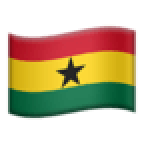The African continent is credited with civilisation, culture and many other beautiful things.
As Africans, our identity lies in our heritage and despite atrocities meted out to us such as the Atlantic slave trade, colonisation and partition of the continent we continue to stand proud.
As Africans celebrate African Union Day, one item that sticks out on the day set aside to celebrate African excellence, independence, achievements and struggle are our clothing. Even before the advent of Europeans, Africans already had their form of fashion and made sure this never got lost.
Here are some native outfits that are associated with certain African countries.
Kente is one of the most popular and famous clothing associated with the name Ghana. The woven fabric represents the Ghanaian people irrespective of their tribe. Most Ghanaian women love to dress up in Kaba and Slit made from Kente matching it with beautiful head wraps and heels. The Men, on the other hand, wrap the cloth over their shoulder with traditional wooden sandals known as Ahenema.
Africa most populous country, Nigeria is blessed with more than 500 ethnic groups but Nigerians are known for their Agbada for the men and the Iro and Buba for the women (Blouse and wrap). The Agbada is a loose overall with a trouser that is worn with a hat and half shoes. Also known as "Anago" the Iro and Buba is a blouse and wrapper combination that is worn by Nigerian women especially the mothers and older women. The Gele, a type of elegant head wrap is also worn with colourful glass and clay beads.
Senegalese people wear traditional clothing which is described as "Boubou". Th Boubou consists of a tunic, trousers and a boubou which will go on top of the suit. It is usually made with cotton or batik fabrics. The Women also wear a more effeminate form of the boubou but with a skirt instead of trousers. Just like their other African counterparts the women also join the head wrap gang
Even though the people of the Masai Mara are one of the smallest groups in the beautiful Safari country of Kenya, their native clothing has become the national outfit of Kenya. The beadwork which is worn on the head is one of their popular and significant clothing items. The bride's beaded collar, for instance, holds a huge meaning and it's one of the high points of the Maasai civilisation. Lovely red cloth also features prominently in the fashion of the Kenyan people.
The South Africans are die hard fans of freedom fighter and it's former president, Nelson Rohilala Mandela to the extent that they've named their distinctive rich silk shirts after him. The Madiba shirt has several South African art inscribed in them. Intricately-made beads are also patronised by its woman, long skirts and colourful Zulu hats also make up the fashion of Africa's most developed nation a.k.a "The Rainbow Nation".
South Africa's northwestern neighbour, Namibia is also a nation which prides in their national clothing. Inspired by Victorian dress Namibian women especially the Herero folks are seen floor-length skirts accompanied with a fitted bodice and puffed-up sleeve. The look usually comes with a horn-shaped hat, probably in the shape of a bull's horn.
In Zimbabwe just like other African countries clothing play a major role in the lives of the people. Different outfits define the status, economic background, age and even education of the person wearing it. Married women, for instance, wear a blanket known as Nguba and a lot of thickly beaded hoops of twisted grass called Isigolwani whiles men in general wear breastplate made from animal skin. The type of ornaments worn may decide the age of the person wearing it.
Ethiopia, the nation where the African Union is headquartered is also another country that puts clothing and fashion on the forefront. Ethiopian women wear an ankle-length dress known as the Habesha Kemis. The Habesha Kemis is made of chiffon and comes in white, grey or beige shades. A shawl known as the netela is wraped around the dress. The men wear a long-sleeve, knee-length shirt, and matching pant generally referred to as the Ethiopian suits.
The Burnous is a native outfit of the Algerian people. It is a long cloak which consists of woollen fabric and a hood, usually white in colour that is worn by the Berbers people in the region.Military personnel unofficially wear the white Burnous but in a different form.
In the Democratic Republic of Congo and it's twin nation Congo Brazaviile, the Sapeurs, a group of Congolese men whose life goal is to look dapper by spending their time and money in striking dresses that are elegant. The movement was believed to have been started by one Strevos Niarcos also known as the "Father of Sapology". Despite beginning only in the 1970's, Sapeurs and their flamboyant style have become an integral part of Congolese culture. Members of the movement can be seen walking the streets of Kinshasha in their elegant suits, shoes and hats.


)
)
)
)